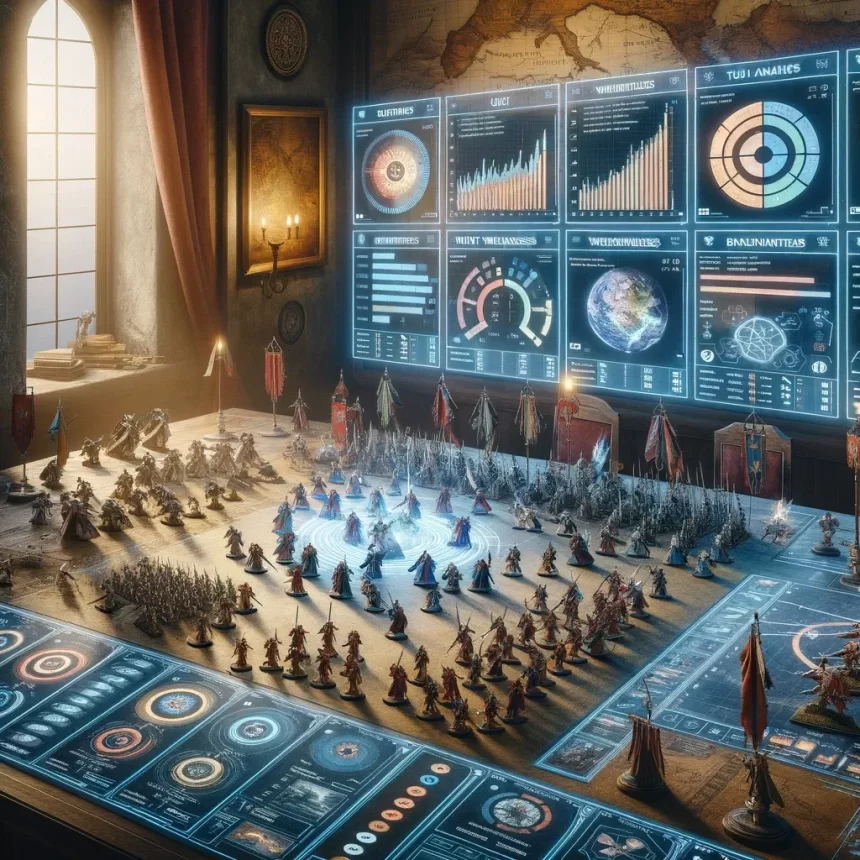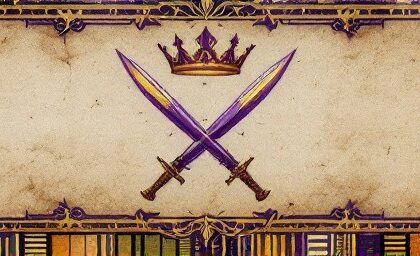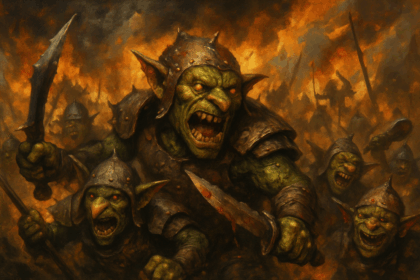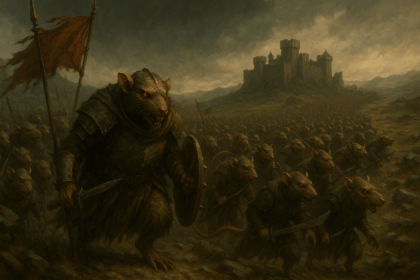Introduction
In Kings of War, there often exists a discrepancy between a unit’s theoretical potential and its actual performance on the battlefield. As an avid Kings of War player, I’ve had the opportunity to collect and analyze data from 50 recent games (many of them chronicled on the excellent Regnum Aeternum), providing some insights that go beyond initial theorycrafting.
The Role of Theorycrafting in Kings of War
Theorycrafting, the practice of analyzing game mechanics and developing strategies based on available information, is a fundamental aspect of the Kings of War community. Players engage in deep discussions, examining unit statistics, theorizing optimal army compositions, and devising tactical maneuvers. Websites like Dash28.org and Goonhammer offer comprehensive articles on these subjects, often proposing strategies such as the “rule of thirds” to optimize unit positioning and objective control.
However, the transition from theory to tabletop can be challenging. Factors like a unit’s base size, which can hinder its ability to engage in combat, or its perceived “threat” level, which may make it a primary target for focus-fire elimination or chaffing, can significantly impact its effectiveness in actual gameplay. For example, a horde of Frostfang cavalry can do serious damage–and so good players target that 15/17 unit with ranged fire or feed a steady stream of chaff to it, limiting the actual output compared to the theoretical output.
Leveraging Data Analytics to Assess Unit Performance
To bridge the gap between theorycrafting and tabletop performance, I embarked on a data analytics project, meticulously tracking each unit’s performance across (at this point) 50 Kings of War games. This involved recording data points such as the amount of damage dealt and received by each unit, as well as their overall contribution to the game’s outcome.
By visualizing this data through graphs, I was able to identify trends and patterns in unit performance. These visualizations, such as average damage given vs. received and average performance ratings vs. combined damage, revealed that some units, despite appearing formidable on paper, may underperform due to practical challenges like positioning difficulties or becoming high-priority targets.
First, in each game I rated, from 1 to 5, how well the unit performed. This is to account for things like snow foxes and inspiring individuals, who may have a fantastic game but neither put out nor soak up damage. For the second chart, I compared average rating vs the combined damage given and received. As you can see, a paladin monster slayers, abyssal hunt, frost giants, and surprisingly the exemplar paladin all score well on this metric. Though I haven’t used them often the villein penitent legion soaks up a ton of damage but is not terribly effective in actual gameplay. Some units that should be good (e.g. Frostfang Cavalry) are so tempting targets for opponents that, notwithstanding how they look on paper, they haven’t delivered as expected in actual gameplay. Note that this chart isn’t weighted for cost, either, so some units that may be very cost-effective (such as villein bowmen) appear a bit artificially worse than the otherwise would.
Second, I charted the average damage given and received by various units (so units that are great anvils are on high on the y-axis, while units that are great hammers are high on the x-axis). The size of the circle indicates how many times I used the unit, so a large circle (Villein Penitent Horde) is used far more frequently than a small one (Ogre Palace Guard Horde). As expected, villein penitents (both horde and legion) are fantastic anvils, soaking up damage. Similarly, the Phoenix and Sir Roderick both soak up a lot of damage–the phoenix by being a regenerating chaff piece, and Sir Roderick by being scary enough that he’s everyone’s top target.
From a damage perspective, a horde of Paladin Monster Slayers do good work. They’re weighty enough to stick around and hit hard enough to put out some hurt–while not being overly easy to remove by opponents. Abyssal Hunt cavalry and Hrimm also put out consistently high damage.
Conclusion
While theorycrafting forms the bedrock of understanding Kings of War mechanics, the transition from theory to tabletop presents unique challenges. The data analytics approach I employed underscores the importance of adaptability and practical experience in addition to strategic planning. Units that look great on paper may not always deliver on the table, as the game theory rock-paper-scissors approach may end up boxing them out and minimizing actual effectiveness. As Kings of War players, we must continuously refine our strategies, leveraging both theoretical knowledge and empirical data to optimize our gameplay and stay ahead of the competition. By incorporating data analytics into our Kings of War journey, we can bridge the gap between theorycrafting and tabletop performance, unlocking new insights and strategies that will elevate our gameplay to the next level.







